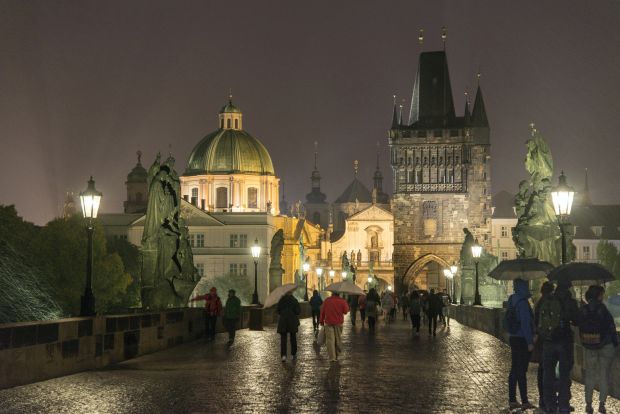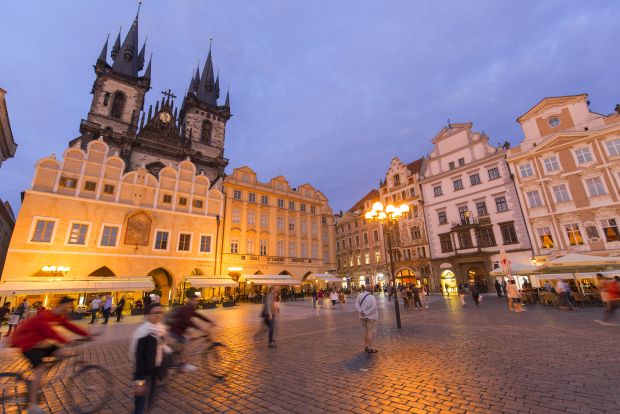Is it time to trade your kit zoom lens in on something faster? As Peter Burian explains, the extra cost might take some getting used to, but there are benefits to be had in terms of image quality and low-light performance.
Because most digital SLR camera owners demand compact, lightweight lenses, most zooms feature a small maximum aperture. That applies to telephoto zooms as well. A typical zoom lens is designated as f/3.5-5.6 or f/4-5.6, indicating the maximum aperture is quite small at the short end and becomes very small at longer focal lengths. In practical terms, that translates to a moderate light gathering ability. On the other hand, some lenses boast a much wider maximum aperture of f/2.8 – available at all focal lengths .

For a stock photography trip I recently did through Europe with a full-frame Nikon D800, I took three f/2.8 lenses – an ultra-wide 15-30mm, a “normal” 24-70mm zoom and a 70-200mm telephoto. These were Tamron models, but you can find ultra wide, normal and telephoto f/2.8 in several other brands. They’re available for DSLRs with a full-frame or smaller sensor and also for mirrorless cameras.
Low-light benefits
Serious shooters appreciate f/2.8 telephotos because they allow you to shoot at faster shutter speeds. Granted, this may not be an issue on bright, sunny days even at f/5.6 when using ISO 200, for example. In much darker locations, however, a very wide aperture can be a blessing. Let's say you’re shooting a sports event in an indoor arena. If a lens’ widest aperture is f/5.6, you might need to use ISO 6400 to freeze the competitors’ motion. Switch to a 70-200mm f/2.8 zoom and you could achieve the same action-stopping effect at ISO 1600.
Note, too, that the wide maximum aperture is constant with nearly all “fast” zooms; it’s available at all focal lengths. This is a definite benefit against the more typical zooms whose maximum aperture becomes smaller as you shift to longer focal lengths. With a constant f/2.8 aperture, the exposure time will not become longer as you zoom from 70mm to 200mm (to compensate for the increasingly smaller aperture) for example.
An image made at a lower ISO level will exhibit less digital noise: the “grainy” pattern of random, coloured specks that can obliterate intricate detail. While Noise Reduction processing (in the camera or in a computer) can provide smoother high ISO images, the effect is achieved by blurring the “grain” pattern. But this also smudges fine detail, reducing resolution. On the other hand, a low ISO image be “cleaner” – with less obvious coloured speckles – and more richly detailed.

Recently I was shooting street scenes, cultural events and architecture in Europe, and I found the wide aperture was most useful for a shutter speed that would minimise blurring from camera shake. A tripod would have been ideal, but that accessory is prohibited in locations such as St. Stephan (a cathedral) and Schönbrunn (a palace) in Vienna, Austria.
It was also impractical to use a tripod on a busy urban street. In dark locations ISO 1600 often allowed for a 1/60s shutter speed at f/2.8. At the long end of a 24-70mm lens, this minimised blurring from both camera shake and from the movement of people in the scene. With a lens that offers a smaller maximum aperture of f/5.6, ISO 6400 would have been required for shooting at 1/60s.
Optical & build quality
Because many wide aperture lenses are prosumer or professional grade products, they usually feature high-grade optical elements for better image quality. This applies to the many of the constant f/2.8 aperture models. They use at least several large pieces of low-dispersion glass and/or aspherical glass for optimal image quality, even at f/2.8. The high-tech elements are designed to correct optical aberrations for high sharpness at f/2.8 and also to minimise distortion.
With the lenses I carried, f/2.8 was often useful for recording the vast, dark interiors of Gothic churches. My images exhibit outstanding sharpness, even at the edges of the frame. Darkening at the corners (light fall off or vignetting) is quite common with most zoom lenses of most brands, particularly at wide apertures. Fortunately, that’s easy to fix with imaging software which includes a vignette correction utility.
Focus & depth of field
A fast lens transmits a great deal of light to the camera’s viewfinder and the autofocus sensor, making it easier to focus in low light. Manual focusing is less problematic than it would be with a small aperture lens because the view is brighter. That can be very useful when shooting inside a dark home, a theatre, a cathedral or a castle. Autofocus is quicker and more reliable in dark locations as well.

The bottom line
As I’ve already hinted, the wide-aperture zooms aren’t ideal in every respect. They’re large, and hence heavy, because of the oversized diaphragm needed to accommodate an aperture of f/2.8. Rugged construction, with metal components, also increases the weight. Because of the greater amount of materials – especially for the large optical elements – they’re also more expensive. Hence, the f/2.8 lenses aren’t as portable or as affordable as their more easily carried f/4.5-5.6 or similar counterparts.
Making up for the drawbacks, a fast, constant aperture zoom provides the benefits already discussed. Most important for my needs was the image quality ranging from excellent to superlative. In fact, some of my best images from Europe made for A1 size (594 x 841mm) custom prints which look stunning on the walls of my home.
Of course, you need not be shooting professionally to appreciate the advantages of a fast zoom with high-grade optics and construction. If you’re an experienced shooter, or a budding enthusiast who is ready to produce superior potential quality, you may be a candidate for at least one such lens. Though not inexpensive, this category of lens will provide great value, paying dividends with features and technology that complement your creative vision. ❂

© Peter Burian






